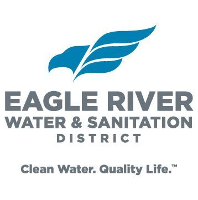CATF named most effective climate organization for the sixth year in a row – Clean Air Task Force

Report on Clean Air Task Force’s Contributions to Sustainable Development Goals
Introduction
The Clean Air Task Force (CATF) has been recognized for the sixth consecutive year as a leading global climate organization by independent evaluators. This sustained recognition highlights the organization’s effective, evidence-based strategies, which directly contribute to the achievement of several United Nations Sustainable Development Goals (SDGs), particularly those concerning climate action, clean energy, and innovation.
Key Recognitions and Endorsements
Evaluation by Giving Green
In its 2025-2026 Top Climate Nonprofits list, Giving Green has recommended CATF for the sixth straight year, awarding a grant of $4 million over two years. The recommendation underscores CATF’s significant impact on global climate policy and its alignment with key sustainability targets. Giving Green cited several core strengths:
- Comprehensive Approach: A model that integrates technical analysis, stakeholder engagement, and policy research to drive measurable progress.
- Policy Influence: A proven track record of influencing historic climate policies, including the Infrastructure Investment and Jobs Act (IIJA) and the Global Methane Pledge.
- Strategic Adaptability: The ability to remain agile and maximize impact across changing technological and political landscapes.
Consistent High Ratings
CATF’s effectiveness is further validated by other leading evaluators. Founders Pledge has repeatedly named it one of the most effective climate organizations globally. Additionally, CATF maintains the highest possible 4-star rating from Charity Navigator, signifying exceptional performance and commitment to its mission.
Alignment with Sustainable Development Goals (SDGs)
SDG 13: Climate Action
CATF’s primary mission is to safeguard against the worst impacts of climate change, making its work a direct contribution to SDG 13. The organization’s pragmatic model focuses on advancing a full suite of climate solutions that are viable in diverse economies and political contexts. This includes pairing near-term actions, such as curbing methane emissions, with long-term investments in innovation.
SDG 7: Affordable and Clean Energy
CATF actively promotes the transition to a decarbonized energy system, directly supporting the targets of SDG 7. Its programs are designed to accelerate the development and deployment of low-carbon energy technologies. Key initiatives include:
- Power Sector Decarbonization: A dedicated program to accelerate the deep decarbonization of the global electricity system.
- Advancement of Clean Firm Technologies: Promoting practical, bipartisan solutions for reliable, carbon-free energy.
- Geothermal Energy Innovation: Leading efforts in emerging technologies such as superhot rock geothermal energy.
- Regulatory Streamlining: Advocating for policies that enable faster deployment of clean energy infrastructure.
SDG 9: Industry, Innovation, and Infrastructure
The organization’s focus on technological innovation and decarbonizing essential industries is central to achieving SDG 9. CATF expands the portfolio of climate solutions by targeting sectors where emissions are hardest to abate. This work involves:
- Decarbonizing Hard-to-Abate Sectors: Developing strategies for industries such as aviation and shipping.
- Influencing Infrastructure Policy: Playing a substantial role in securing key provisions within the Infrastructure Investment and Jobs Act (IIJA).
- Fostering an Innovation Ecosystem: Catalyzing the rapid development of new climate-protecting technologies.
SDG 17: Partnerships for the Goals
CATF’s operational model exemplifies SDG 17 by building robust partnerships to achieve climate objectives. The organization collaborates with a wide range of stakeholders across the public and private sectors. Its success is built on:
- Multi-stakeholder Engagement: Working with policymakers, industry leaders, and civil society in the U.S., Europe, and globally.
- International Cooperation: Playing an instrumental role in advancing global agreements such as the Global Methane Pledge.
- Policy Research and Education: Providing evidence-based analysis to inform and guide effective climate policy.
1. Which SDGs are addressed or connected to the issues highlighted in the article?
-
SDG 7: Affordable and Clean Energy
The article extensively discusses the Clean Air Task Force’s (CATF) work on energy. It mentions efforts in “power sector decarbonization,” developing “superhot rock geothermal energy,” promoting “clean firm technologies,” and accelerating “clean energy deployment.” These activities are central to transitioning the global energy system towards sustainable sources, which is the core objective of SDG 7.
-
SDG 9: Industry, Innovation, and Infrastructure
This goal is addressed through CATF’s focus on technological innovation and upgrading industrial sectors. The article highlights their work in “decarbonizing hard-to-abate-sectors such as aviation and shipping” and catalyzing the “rapid development and deployment of low-carbon energy and other climate-protecting technologies.” Furthermore, the mention of securing wins in the “Infrastructure Investment and Jobs Act (IIJA)” directly links to building resilient and sustainable infrastructure.
-
SDG 13: Climate Action
This is the most prominent SDG in the article. CATF’s entire mission is to “safeguard against the worst impacts of climate change.” The article details their “comprehensive approach to climate mitigation,” including specific actions like “curbing methane emissions” and influencing “key historic climate policies.” Their work on the “Global Methane Pledge” is a direct and urgent action to combat climate change and its impacts.
-
SDG 17: Partnerships for the Goals
The article underscores the importance of collaboration. CATF’s model involves “stakeholder engagement,” “policy research and education in the U.S. and Europe,” and influencing policy through bipartisan support. The recognition and funding from evaluators like “Giving Green” and “Founders Pledge,” as well as their role in the “Global Methane Pledge,” exemplify the multi-stakeholder partnerships necessary to achieve sustainable development.
2. What specific targets under those SDGs can be identified based on the article’s content?
-
Target 7.2: Increase substantially the share of renewable energy in the global energy mix.
CATF’s programs to accelerate “deep decarbonization of the electricity system” and promote “faster clean energy deployment” are directly aimed at increasing the proportion of clean and renewable energy sources in the power sector, aligning perfectly with this target.
-
Target 9.4: Upgrade infrastructure and retrofit industries to make them sustainable.
The focus on “decarbonizing hard-to-abate-sectors such as aviation and shipping” involves developing and implementing “clean and environmentally sound technologies” to make these essential industries sustainable, which is the essence of Target 9.4.
-
Target 13.2: Integrate climate change measures into national policies, strategies and planning.
The article explicitly states that CATF “has played a substantial role in securing key historic climate policies, including wins in the Infrastructure Investment and Jobs Act (IIJA) and the Global Methane Pledge.” This demonstrates a direct impact on integrating climate action into national and international policy frameworks.
-
Target 17.17: Encourage and promote effective public, public-private and civil society partnerships.
CATF’s operational model, which relies on “stakeholder engagement” and building “bipartisan support” to influence policy, is a clear example of promoting effective partnerships. The funding and recognition from organizations like Giving Green further illustrate the success of these civil society collaborations in mobilizing resources for climate action.
3. Are there any indicators mentioned or implied in the article that can be used to measure progress towards the identified targets?
-
Indicator for Target 13.2: Enactment of climate-related policies.
The article provides a clear, qualitative indicator of progress by citing CATF’s success in influencing and securing “key historic climate policies,” specifically naming the “Infrastructure Investment and Jobs Act (IIJA).” The existence and implementation of such legislation serve as a direct measure of climate change measures being integrated into national policy.
-
Indicator for Target 13.2 / SDG 13: Reduction in greenhouse gas emissions.
The article implies a direct indicator of progress through its emphasis on “curbing methane emissions” and the “Global Methane Pledge.” Reductions in methane, a potent greenhouse gas, can be measured and tracked to assess the impact of these initiatives on climate mitigation.
-
Indicator for Target 17.17: Financial resources mobilized for partnerships.
A specific quantitative indicator is mentioned in the article: “Giving Green announced $26 million in grants to high-impact climate organizations, including $4 million over two years to CATF.” This figure represents the amount of financial resources mobilized through partnerships to support sustainable development goals, specifically climate action.
4. Create a table with three columns titled ‘SDGs, Targets and Indicators” to present the findings from analyzing the article.
| SDGs | Targets | Indicators |
|---|---|---|
| SDG 7: Affordable and Clean Energy | 7.2: Increase substantially the share of renewable energy in the global energy mix. | Implied: The rate of “deep decarbonization of the electricity system” and “faster clean energy deployment.” |
| SDG 9: Industry, Innovation, and Infrastructure | 9.4: Upgrade infrastructure and retrofit industries to make them sustainable. | Implied: Progress in “decarbonizing hard-to-abate-sectors such as aviation and shipping” through new technologies. |
| SDG 13: Climate Action | 13.2: Integrate climate change measures into national policies, strategies and planning. | Mentioned: The enactment of “key historic climate policies” like the “Infrastructure Investment and Jobs Act (IIJA)” and the establishment of the “Global Methane Pledge.” |
| SDG 17: Partnerships for the Goals | 17.17: Encourage and promote effective public, public-private and civil society partnerships. | Mentioned: The amount of financial resources mobilized, such as the “$4 million over two years to CATF” from Giving Green. |
Source: catf.us
What is Your Reaction?
 Like
0
Like
0
 Dislike
0
Dislike
0
 Love
0
Love
0
 Funny
0
Funny
0
 Angry
0
Angry
0
 Sad
0
Sad
0
 Wow
0
Wow
0




















































.jpg.webp?itok=0ZsAnae9#)






















